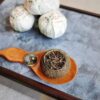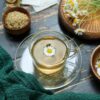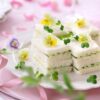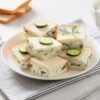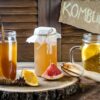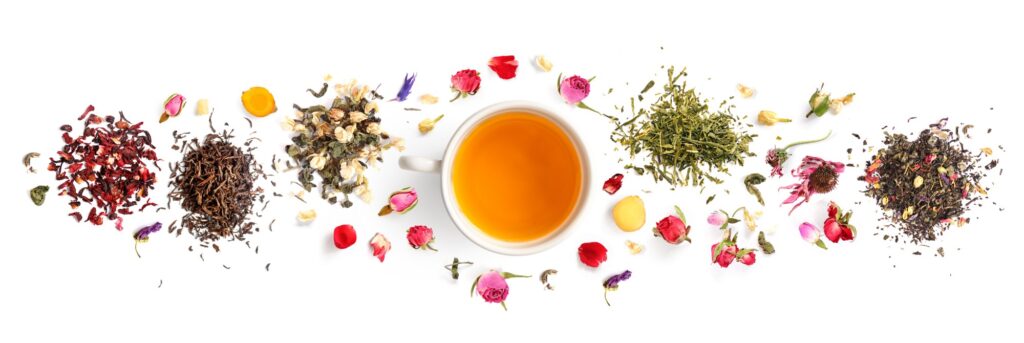
Indulge your senses and embark on a captivating tea journey as we dive into the art of tea cupping. From the delicate aromas to the complex flavors, tea cupping is a sensory experience like no other.
With each carefully brewed cup, tea cupping allows us to appreciate the nuances and subtleties of different tea varieties. It is a meticulous process of examining the appearance, aroma, and taste of the tea leaves. As we venture into the world of tea cupping, we will unlock the hidden depths of our favorite teas and discover new sensory dimensions.
From the floral notes of a fragrant green tea to the robust tastes of a bold black tea, tea cupping unveils a treasure trove of flavors. We will delve into the techniques used by tea experts to evaluate the quality and character of various teas, helping you elevate your own tea appreciation skills.
Join us on this immersive journey as we uncover the art of tea cupping and learn to savor the exquisite aromas and flavors that tea has to offer.
The history and significance of tea cupping
Tea cupping has a rich history that dates back centuries. Its origins can be traced to ancient China, where tea was first cultivated. The practice of cupping was developed as a way to assess the quality of tea leaves before they were sold and consumed. It was a way for tea merchants and connoisseurs to ensure that they were getting the best teas available.
In addition to its historical significance, tea cupping also holds cultural importance in many tea-drinking societies. It is seen as a way to connect with nature, appreciate the craftsmanship of tea production, and foster a deeper understanding of the flavors and aromas that tea has to offer.
The process of tea cupping
Tea cupping involves a series of steps that enable us to fully experience and evaluate the tea. The first step is to carefully observe the appearance of the dry tea leaves. This includes noting the shape, size, and color of the leaves, as well as any other visual characteristics such as buds or stems.
Next, hot water is poured over the leaves, and the tea is steeped for a specific amount of time. The aroma of the steeping tea is then assessed by inhaling deeply from the cup. This is an important step as the aroma can provide valuable insights into the flavor profile of the tea.
Once the steeping time is complete, the tea is ready to be tasted. Sipping the tea and allowing it to coat the entire mouth helps to fully appreciate its flavors. The taste can be evaluated based on factors such as sweetness, bitterness, astringency, and body. It is important to take note of these characteristics and compare them to the desired flavor profile for each type of tea.
Different types of tea
Tea cupping allows us to explore the vast array of tea varieties and understand their unique characteristics. There are several main types of tea, including green, black, oolong, white, and herbal teas. Each type has its own distinct flavor profile, aroma, and brewing requirements.
Green tea, for example, is known for its fresh and grassy flavors. It is often described as having a vegetal or seaweed-like taste. Black tea, on the other hand, is known for its bold and robust flavors. It can have notes of malt, caramel, or even chocolate.
Oolong tea falls somewhere in between green and black tea, with a wide range of flavors depending on the oxidation level. It can be floral, fruity, or even have a roasted flavor. White tea, the least processed of all teas, offers delicate and subtle flavors with a hint of sweetness. Herbal teas, such as chamomile or peppermint, are not made from the Camellia sinensis plant and offer a variety of flavors and aromas.
Developing your tea tasting skills
Tea cupping is not only a way to appreciate tea but also an opportunity to develop your taste buds and sensory skills. Like any other skill, tasting tea takes practice and patience. By regularly cupping different teas, you can train your palate to detect even the most subtle flavors and aromas.
One way to enhance your tea tasting skills is by creating a tasting journal. In this journal, you can record the details of each tea you cup, including its appearance, aroma, and taste. Over time, you will start to notice patterns and develop a deeper understanding of your preferences and the characteristics of different teas.
Another helpful technique is to engage in comparative cupping. This involves cupping multiple teas side by side and comparing their flavors and aromas. By doing this, you can easily identify the unique qualities of each tea and develop a better appreciation for their individual characteristics.
The importance of aroma in tea cupping
Aroma plays a vital role in tea cupping as it greatly influences our perception of flavor. The aroma of tea can be influenced by factors such as the tea variety, the processing method, and even the environment in which it was grown. By inhaling the aroma of a tea before taking a sip, we can prepare our taste buds for the flavors to come.
To fully experience the aroma of tea, it is important to use a proper cupping set. This typically consists of a small ceramic or porcelain cup with a lid. The lid helps to trap the aromas inside the cup, allowing them to be concentrated and easily discernible.
When cupping, it is recommended to take a moment to appreciate the tea’s aroma before diving into the tasting process. Inhale deeply and try to identify any specific scents or notes that you can detect. The aroma can provide valuable clues about the tea’s origin, processing, and flavor profile.
Identifying flavor profiles in tea
Flavor is perhaps the most important aspect of tea cupping. It is what allows us to truly savor and enjoy the tea. Each type of tea has its own unique flavor profile, which can range from delicate and subtle to bold and complex.
When cupping tea, it is helpful to pay attention to the different taste elements. This includes sweetness, bitterness, astringency, and body. Sweetness can range from mild to pronounced and can be influenced by factors such as the tea variety and the brewing method.
Bitterness is a common characteristic in some teas, especially those with a high level of tannins. Astringency refers to the drying or puckering sensation that some teas leave in the mouth. It is often associated with black teas and certain oolongs.
Body refers to the weight and texture of the tea in the mouth. It can range from light and watery to full-bodied and creamy. The body of a tea can greatly impact the overall drinking experience and can be a key factor in determining its quality.
The role of terroir in tea cupping
Terroir, a term often associated with wine, also plays a significant role in the flavor and character of tea. It refers to the environmental factors, such as climate, soil, and altitude, that influence the growth and development of the tea plant.
Teas grown in different regions can have distinct flavor profiles due to variations in terroir. For example, teas grown in high-altitude regions may have a more pronounced flavor and aroma compared to those grown at lower elevations. Similarly, teas grown in fertile soil may exhibit richer flavors and more complex aromas.
Cupping teas from different regions side by side can provide a fascinating exploration of terroir. It allows us to compare and contrast the flavor profiles of teas grown under different environmental conditions and gain a deeper appreciation for the influence of terroir on tea.
Tea cupping etiquette and best practices
When engaging in tea cupping, it is important to follow certain etiquette and best practices to ensure a meaningful and enjoyable experience. Here are a few guidelines to keep in mind:
- Use clean and neutral-tasting water: The quality of water used to brew tea can greatly impact its flavor. It is recommended to use filtered or spring water that is free from any strong odors or flavors.
- Use appropriate brewing parameters: Each type of tea has specific brewing parameters, including water temperature and steeping time. It is important to follow these guidelines to ensure optimal flavor extraction.
- Take time to appreciate each cup: Tea cupping is not a rushed process. Take the time to fully immerse yourself in the aroma and flavors of each cup. Allow yourself to be present and mindful throughout the cupping session.
- Cleanse your palate between cups: To fully appreciate the flavors of each tea, it is important to cleanse your palate between cups. This can be done by sipping plain water or nibbling on unsalted crackers or bread.
- Respect the tea: Treat the tea with respect and gratitude. Acknowledge the effort and skill that went into producing each cup. This mindset can enhance your overall tea cupping experience.
Embracing the art of tea cupping
Tea cupping is a journey of the senses, allowing us to explore the intricate world of tea aromas and flavors. By embracing this ancient practice, we can develop a deeper appreciation for the art of tea and enhance our own tea tasting skills.
From the history and significance of tea cupping to the process itself, there is much to uncover and learn. Understanding the different types of tea, appreciating the importance of aroma, and identifying flavor profiles are all essential aspects of tea cupping.
Terroir and tea cupping etiquette also play a significant role in the overall experience. By following best practices and respecting the tea, we can fully immerse ourselves in the beauty of tea cupping.
So, the next time you brew a cup of tea, take a moment to observe, inhale, and savor. Allow yourself to be transported on a journey of aroma and flavor, and embrace the art of tea cupping. You may just discover a whole new world of tea appreciation waiting to be explored.

